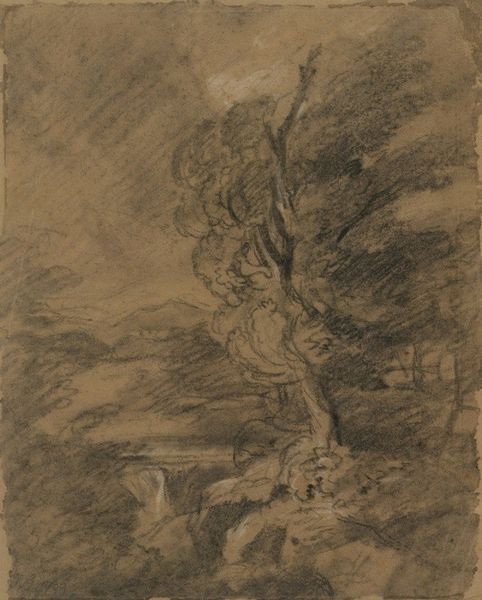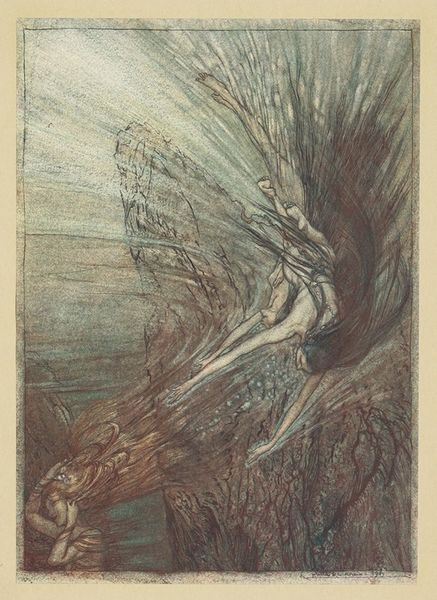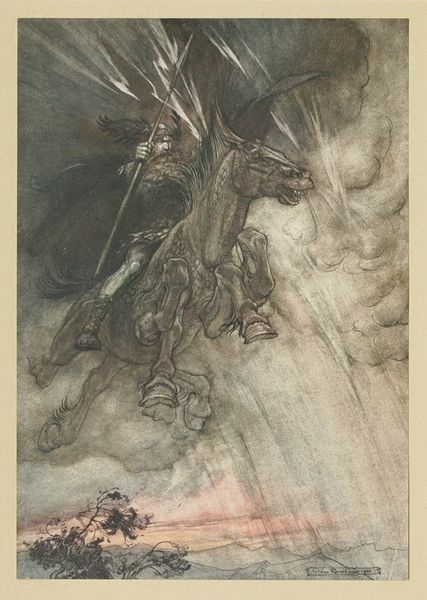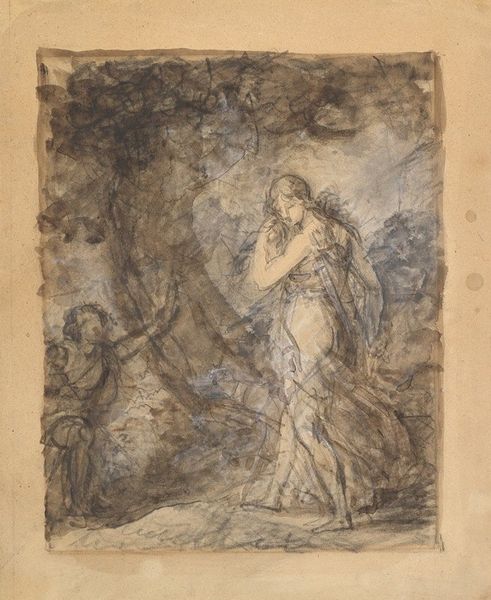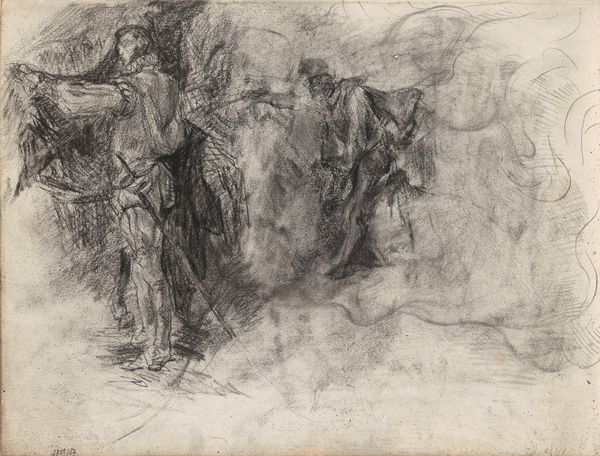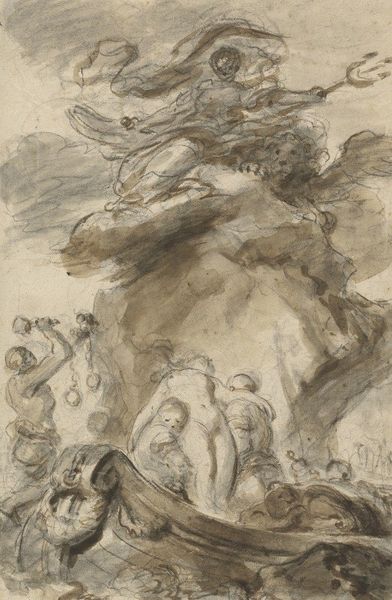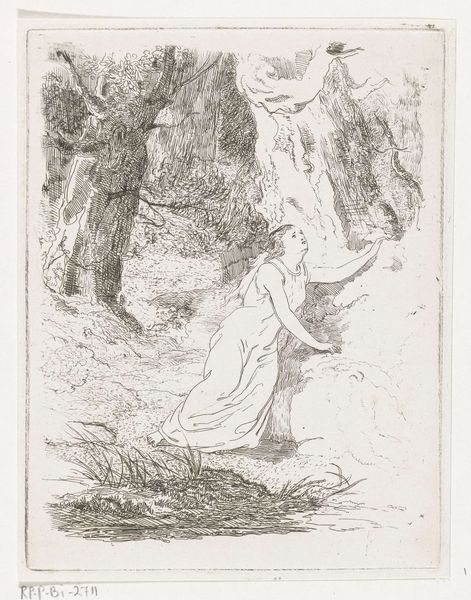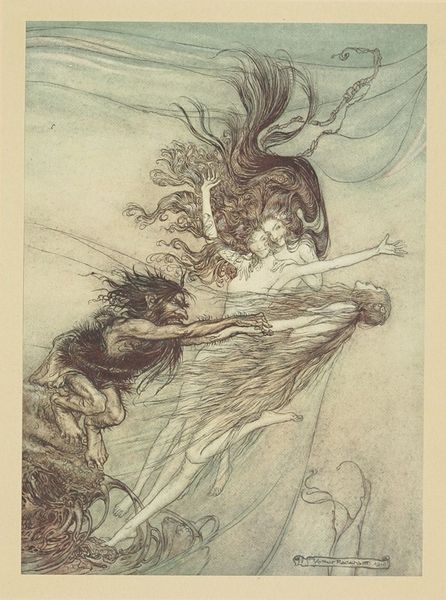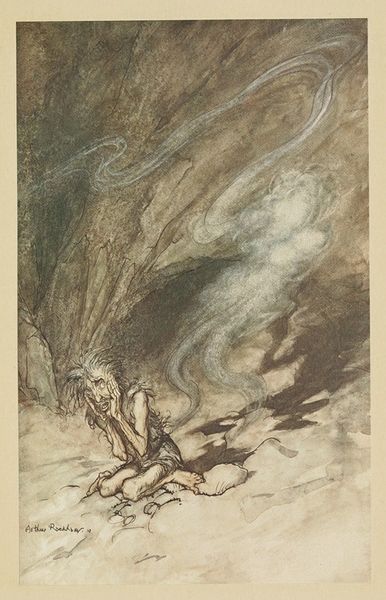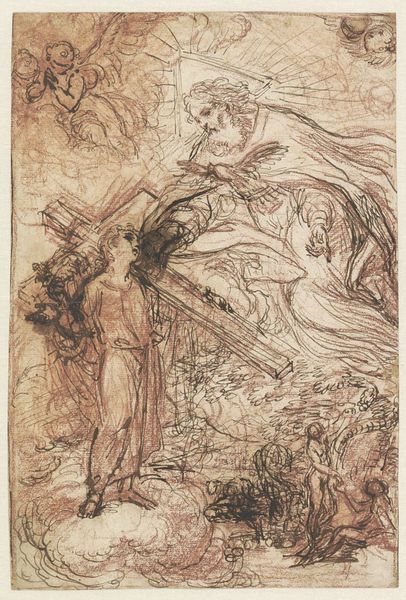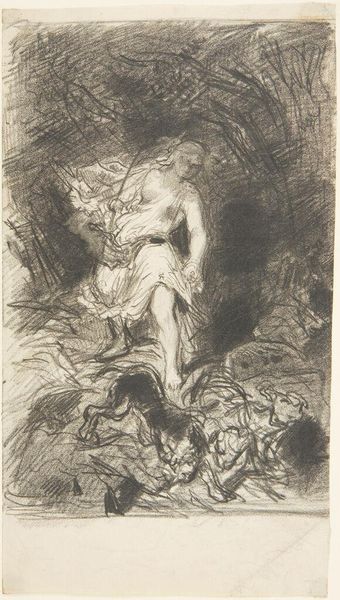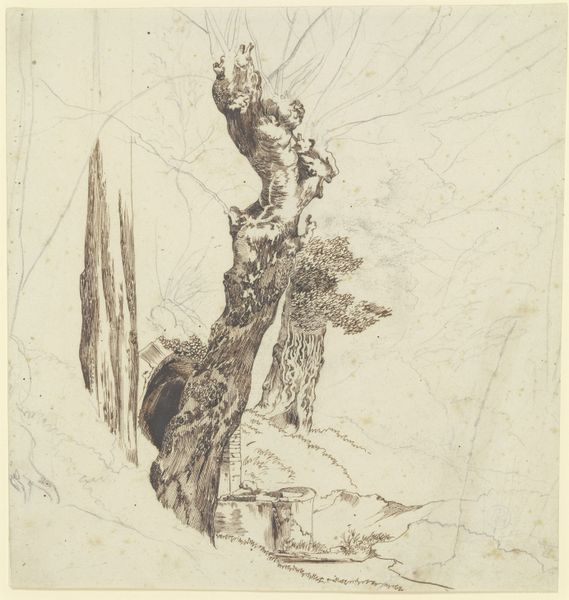
drawing, ink, charcoal
#
drawing
#
baroque
#
ink painting
#
pencil sketch
#
landscape
#
charcoal drawing
#
figuration
#
ink
#
charcoal
#
watercolor
Copyright: Public Domain: Artvee
Curator: Salvator Rosa, an artist working in seventeenth-century Italy, created this evocative drawing entitled "St. Paul, Hermit." Editor: My first impression is raw energy—it feels like the landscape itself is praying. The figure seems almost fused with the trees and rock, and the ink work is so dynamic. Curator: Rosa often challenged artistic conventions. By depicting St. Paul, a significant religious figure, in such a wild and untamed natural setting, Rosa perhaps comments on the place of the church within a changing, turbulent social and political landscape. Editor: Absolutely. And it’s worth considering Rosa’s handling of materials. The combination of ink and charcoal—they have different properties. The ink allows for fluidity and ethereal washes, while the charcoal provides the dense blacks for those really textural passages of tangled hair and branches. It's like he's investigating the haptic qualities of mark-making. Curator: Also interesting is the accessibility of drawing itself. Unlike large-scale oil paintings, drawings could be produced relatively quickly and circulated amongst a wider audience, furthering Rosa's public visibility and reputation. Editor: Yes, it raises questions about the labor involved. This isn't about the opulent display of expensive pigments, but rather a more immediate engagement with readily available materials, something almost anyone could do. I wonder about the kind of paper, too; its absorbency would affect the behavior of the ink. Curator: I agree; the support and materials clearly lend themselves to the raw aesthetic we see, adding to a general sense of pious humility. Consider the contrast between this unidealized figure and the perfect musculature seen on sculptures or idealized paintings of gods. The meaning, after all, is generated as much by these contextual considerations, artistic background, and exhibition environment. Editor: It’s true; while religious, it’s about human connection to the elemental power of nature, using a really immediate and democratic set of materials to create that impact. Curator: Indeed, Rosa's vision resonates even today because of its dramatic use of both the artistic process and its social commentary. Editor: The rough-hewn character really invites a sort of profound respect and contemplation of material culture.
Comments
No comments
Be the first to comment and join the conversation on the ultimate creative platform.
